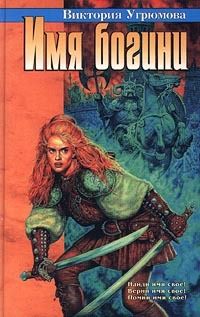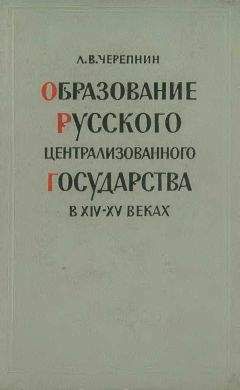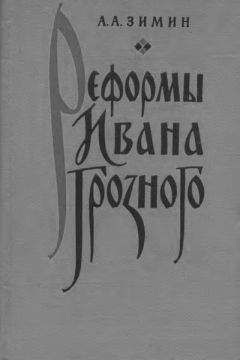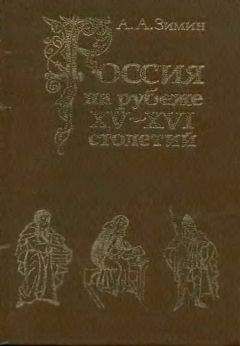Марк Льюис - Империи Древнего Китая. От Цинь к Хань. Великая смена династий
32 Хань-шу 2, с. 85; 50; Хоу Хань-шу 25, с. 886; 52, с. 1722; 60b, с. 1980.
33 Ши-цзи 122, с. 3131.
34 Там же, с. 3133, 3135, 3136, 3139, 3140, 3141, 3145, 3150, 3151, 3152.
35 Там же, с. 3137.
36 Там же, с. 3139, 3143.
37 Хань-шу 24, с. 1101.
38 Климан, Land Contracts and Related Documents («Земельные соглашения и относящиеся к ним документы»), с. 1—34; Шуйхуди Цинь му чжу цзянь, с. 224; Уилбур, Slavery in China during the Former Han Dynasty («Рабовладельческий строй в Китае на протяжении правления династии ранняя Хань»), с. 158—164.
39 Ши-цзи 122, с. 3150, 3153; Хань-шу 23, с. 1106.
40 Хелсевё, Ch’in and Han Law («Право Цинь и Хань»), с. 532—533.
41 Хань-шу 4, с. 125; 23, с. 1097, 1049-1101.
42 Хелсевё, Remnants of Ch’in Law, с. 14—18; Хелсевё, Ch’in and Han Law, c. 533.
43 Шуйхуди Цинь му чжу цзянь, с. 91, 92, 13, 143, 150, 177, 178, 204, 261, 276; Хелсевё, Remnants of Ch’in Law, с. 195.
44 Шуйхуди Цинь му чжу цзянь, с. 84—85, 91, 143, 152, 164, 178, 179, 200, 231. О Хань читайте у Хелсевё в Remnants of Han Law. с. 205-214.
45 Хелсевё, Ch’in and Han Law, c. 528—530.
46 Хань-шу 90, c. 3673—3674; 92, c. 3705—3707; Цянь фу лунь цзянь, гл. 5, с. 173—197; Льюис, Sanctioned Violence, с. 90—91.
47 Хелсевё, Remnants of Ch’in Law, с. 200—201.
48 Шуйхуди Цинь му чжу цзянь, с. 246—247.
49 Чжанцзяшань Хань му чжу цзянь, с. 225—226. Историческая достоверность данного случая ставится под сомнение из-за его сходства со случаем, описанным в Хань Фейцзы цзи ши, гл. 10, с. 595—596.
50 Ши-цзи 6, с. 253; Хань-шу 6, с. 205; Чу, Han Social Structure, с. 328, 329, п. 21; Бодде, The State and Empire of Ch’in («Царство и империя Цинь»), с. 29, 38, 59, 65—66, 88.
51 Хань-шу 6, с. 193, 198, 200, 203, 205; 70, с. ЗОЮ, 3017; 76, 3208, 3214; Льюис, The Han Abolition of Universal Military Service, c. 54.
52 Хоу Хань-шу 4, c. 171; 43, c. 1470-1471; 58, c. 1871; 65, c. 2147; 67, c. 2192.
53 Хоу Хань-шу 23, c. 3533; 47, c. 1586.
54 Хоу Хань-шу 48, c. 1597—1598; Хоу Хань-шу 2, c. Ill; 18, c. 681; 20, c. 737; 47, c. 1576.
55 Хань-шу 23, c. 1109.
56 Хоу Хань-шу 46, c. 1544-1545.
57 Barbien-Low, Ln the final chapter of his Artisans in Early Lmperial China.
58 Там же.
59 Wilbur, Slavery in China during the Former Han Dynasty, c. 121 —126.
Послесловие
1 Хоу Хань-шу 41, с. 1415-1416.
2 De Crespigny, Northern Frontier, гл. 2—4, 7.
3 Хоу Хань-шу 69, с. 2985—2992; Хоу Хань-шу 97, с. 2877, 2885.
4 Хоу Хань-шу 87, с. 2887—2888, 2894; Wang, Qian fu lun jian, гл. 14.
5 Хань-шу 94b, с. 3826; Хоу Хань-шу ib, с. 64.
6 Льюис, The Han Abolition or Universal Military Service, c. 64—65.
7 Ван, Цянь фу лунь цзянь, с. 285.
8 Хоу Хань-шу 1, с. 109; 65, с. 2140.
9 Хоу Хань-шу 4, с. 189; 37, с. 1268; Ван, Цянь фу лунь цзянь, с. 288.
10 Цзяцзысюнь шу цзянь ши, гл. 3, с. 357.
11 те лунь, с. 63.
12 Хоу Хань-шу 14, с. 835.
13 Хоу Хань-шу 58, с. 1866.
14 Де Креспини, Northern Frontier («Северное пограничье»), с. 324– 326, 425-426.
15 Цянь фу лунь цзянь, с. 257, 258.
16 Хоу Хань-шу 73, с. 2354-2356; 74b, с. 2419-2421; 75, с. 2432-2433.
17 Хоу Хань-шу 71, с. 2308; Сань го чжи 12, с. 384.
18 Хоу Хань-шу 16, с. 609-610.
19 Хоу Хань-шу 72, с. 2322.
20 Хоу Хань-шу 24, с. 3563.
21 Хоу Хань-шу 70, с. 2258.
22 Чу, Han Social Structure, с. 133—134.
23 Хоу Хань-шу 24, с. 828.
Библиография
Allen, Joseph R. In the Voice of Others: Chinese Music Bureau Poetry. Ann Arbor: University of Michigan Press, 1992.
Bagley, Robert, ed. Ancient Sichuan: Treasures from a Lost Civilization. Seattle: Seattle Art Museum, 2001.
Baopuzi nei pian jiao shi (Annotated Elucidations of the “Inner Chapters of the Master Who Embraces Simplicity”). Annotated by Wang Ming. Beijing: Zhonghua, 1980.
Baoshan Chu jian (The Chu State Strips from Baoshan). Beijing: Wenwu, 1991.
Barber, Elizabeth Wayland. The Mummies of Urumchi. New York: W. W. Norton, 1999.
Barbieri-Low, Anthony. Artisans in Early Imperial China. Seattle: University of Washington, 2007.
Barfield, Thomas J. The Perilous Frontier: Nomadic Empires and China. Cambridge: Basil Blackwell, 1989.
Barnard, Noel. The Ch’u Silk Manuscript. Canberra: Australian National University Press, 1973.
Bielenstein, Hans. The Bureaucracy of Han Times. Cambridge: Cambridge University Press, 1980.
–“Lo-yang in Later Han times”. Bulletin of the Museum of Far
Eastern Antiquities 48 (1976): 1—142.
Bilsky, Lester. The State Religion of Ancient China. Taipei: The Chinese Association for Folklore, 1975.
Birrell, Anne. Popular Songs and Ballads of Han China. London: Unwin Hyman, 1988.
Bo hu tong shu zheng (Correct Subcommentaries on the “Comprehensive Discourses of the White Tiger Hall”). Annotated by Wu Zeyu. Beijing: Zhonghua, 1994.
Bodde, Derk. Chinas First Unifier: A Study of the Ch ’in Dynasty as Seen in the Life of Li Ssu (2807-208 B.C.). Leiden: E. J. Brill, 1938.
–Festivals in Classical China: New Year and Other Annual Observances During the Han Dynasty. Princeton: Princeton University Press, 1975.
–“The State and Empire of Ch’in.” In The Cambridge History
of China, Vol. 1: The Ch’in and Han Empires, 221 B.C.—A.D. 220. Ed. Michael Loewe. Cambridge: Cambridge University Press, 1986.
Boyd, Andrew. Chinese Architecture and Town Planning: 1500 B.C.—A.D. 1911. Chicago: University of Chicago Press, 1962.
Brashier, К. E. “Han Thanatology and the Division of ‘Souls.’” Early China 21 (1996): 125-158.
–“Longevity like Metal and Stone: The Role of the Mirror in Han
Burials.” T’oungPao 81.4-5 (1995): 201-229.
–“The Spirit Lord of Baishi Mountain: Feeding the Deities or
Heeding the Yinyang.” Early China 26—27 (2001—2002): 159—231.
Bray, Francesca. Technology and Gender: Fabrics of Power in Late Imperial China. Berkeley: University of California Press, 1997.
Brown, Carolyn T., ed. Psycho-Sinology: The Universe of Dreams in Chinese Culture. Lanham, MD: University Press of America, 1988.
Buchanan, Keith. The Transformation of the Chinese Earth: Perspectives on Modern China. London: G. Bell & Sons, 1970.
Cai, Yong. Cai Zhonglang wen ji (Collected Literary Works of Cai Yong). Si bu cong kan ed.
–j)u duan (Solitary Judgments). In Han Wei cong shu, Vol. 1.
Taipei: Xin Xing, 1977.
Cai, Zongqi. The Matrix of Lyric Transformation: Poetic Modes and Self-Presentation in Early Chinese Pentasyllabic Poetry. Ann Arbor: University of Michigan Press, 1996.
Chang, Kwang-chih. The Archaeology of Ancient China. 4th ed., revised and enlarged. New Haven: Yale University, 1986.
Chang, Qu. Huayang guo zhi jiao zhu (Annotated Commentary to the “Record of the States South of Mt. Hua”). Chengdu: Ba Shu Shu She, 1984.
Ch’en, Ch’i-yun. “Coiifucian, Legalist, and Taoist Thought in Later Han.” In The Cambridge History of China, Vol. 1: The Ch’in and Han Empires.
Cheng, Anne. “What Did It Mean to Be a Ru in Han Times?” Asia Major, Third Series 14:2 (2001): 101-118.
Ch’ii, T’ung-tsu. Han Social Structure. Seattle: University of Washington Press, 1972.
Chun qiu fan lu yi zheng (Proving the Meaning of the “Abundant Dew on the Spring and Autumn Annals”). Annotated by Su Yu. Beijing: Zhon-ghua, 1992.
Cohen, Alvin. “Avenging Ghosts and Moral Judgment in the Ancient Chinese Historiography: Three Examples from Shi-chi.” In Legend, Lore, and Religions in China: Essays in Honor of Wolfram Eberhard on His Seventieth Birthday. Ed. Sarah Allan and Alvin P. Cohen. San Francisco: Chinese Materials Center, 1979.
Cook, Constance A. Death in Ancient China: The Tale of One Man’s Journey. Leiden: E. J. Brill, 2006.
Cook, Constance A., and John S. Major, eds. Defining Chu: Image and Reality in Ancient China. Honolulu: University of Hawaii Press, 1999.
Cottrell, Arthur. The First Emperor of China. New York: Holt, Rinehart, and Winston, 1981.
Csikszentmihalyi, Mark. Material Virtue: Ethics and the Body in Early China. Leiden: E. J. Brill, 2004.
Cui, Shi. Si min yue ling ji shi (Collected Elucidations of the “Monthly Ordinances of the Four Categories of People”). Annotated by Miao Qiyu and Wan Guoding. Beijing: Nongye, 1981.
Da Dai li ji jie gu (Analytic Exegesis of the “Elder Dai’s Record of Ritual”). Beijing: Zhonghua, 1983.
de Crespigny, Rafe. Northern Frontier: The Policies and Strategy of the Later Han Empire. Canberra: Australian National University Press, 1984.
De Francis, John. The Chinese Language: Fact and Fantasy. Rep. ed. Honolulu: University of Hawaii Press, 1986.
Dean, Kenneth, and Brian Massumi. First and Last Emperors: The Absolute State and the Body of the Despot. Brooklyn: Autonomedia, 1992.
Demieville, Paul. “Philosophy and Religion from Han to Sui.” In The Cambridge History of China, Vol. 1: The Ch’in and Han Empires, 221 B.C.—A.D. 220. Cambridge: Cambridge University Press, 1986.
DeWoskin, Kenneth J. “Famous Chinese Childhoods.” In Chinese Views of Childhood. Ed. Anne Behnke Kinney. Honolulu: University of Hawaii Press, 1995.
Di Cosmo, Nicola. Ancient China and Its Enemies: The Rise of Nomadic Power in East Asian History. Cambridge: Cambridge University Press, 2002.
– “The Northern Frontier in Pre-Imperial China. ” In The Cambridge History of Ancient China: From the Origins of Civilization to 221 B.C. Ed. Michael Loewe and Edward Shaughnessy. Cambridge: Cambridge University Press, 1999.
Dieny, Jean-Pierre. “Le saint ne reve pas: De Zhuangzi a Michel Jouvet.” Etudes Chinoises 20:1—2 (Printemps-Automne 2001): 127—200.
Dongguan Flan ji jiao zhu (Annotated Commentary on the “Han Records from the Eastern Tower”). Annotated by Wu Shuping. Zhongzhou: Guji, 1987.
Durrant, Stephen W. The Cloudy Mirror: Tension and Conflict in the Writings of Sima Qian. Albany: State University of New York Press, 1995.
–“Ssu’ma Ch’ien’s Portrayal of the First Ch’in Emperor.” In
Imperial Rulersbip and Cultural Change in Traditional China. Ed. Frederick P. Brandauer and Chun-chieh Huang. Seattle: University of Washington Press, 1994.
Ebrey, Patricia. “The Early Stages in the Development of Descent Group Organization.” In Kinship Organization in Late Imperial China: 1000– 1940. Ed. Patricia Ebrey and James L. Watson. Berkeley: University of California Press, 1986.
–“The Economic and Social History of Later Han.” In The Cambridge History of China, Vol. 1: The Chin and Han Empires, 221 B.C.– A.D. 220. Cambridge: Cambridge University Press, 1986.
–“Later Han Stone Inscriptions.” Harvard Journal of Asiatic Studies 40:2 (1980): 325-353.
Egan, Charles H. “Reconsidering the Role of Folk Songs in pre-T’ang Yiieh-fu Development.” T’oung Pao 86 (2000): 47—99.
–“Were Yiieh-fu Ever Folk Songs? Reconsidering the Relevance
of Oral Theory and Balladry Analogies.” CLEAR 22 (Dec. 2000): 31-66.
Elisseeff, Danielle. New Discoveries in China: Encountering History through Archaeology. Secaucus, NJ: Chartwell Books, 1983.




